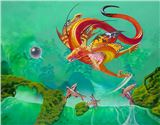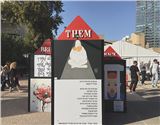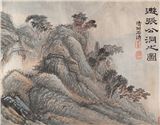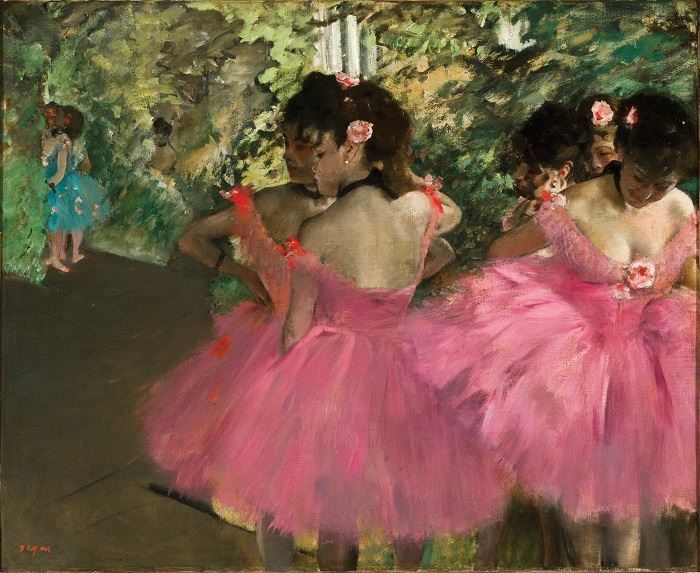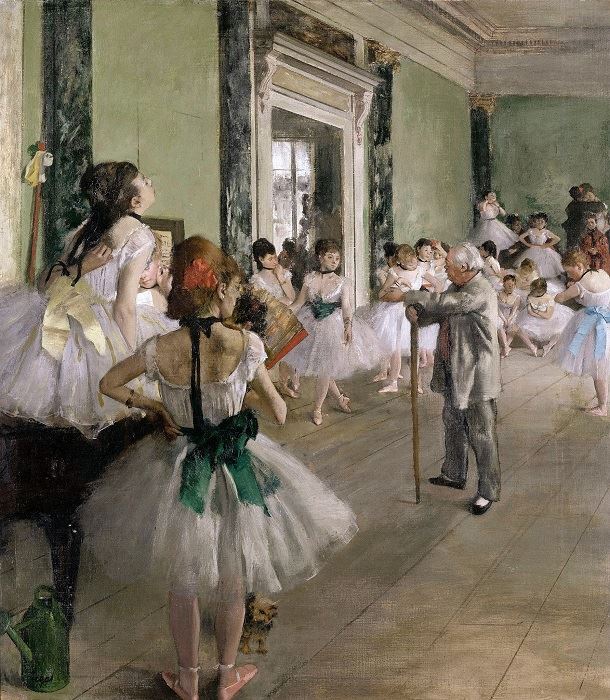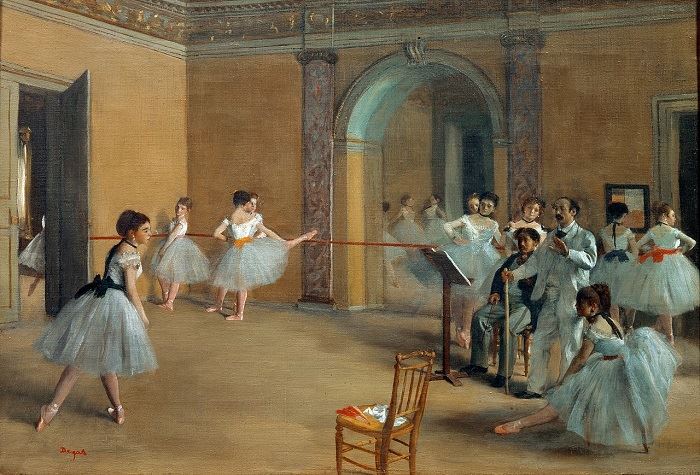Degas’ Little Dancers
Edgar Degas’ ballerinas became his most famous motif, but the disturbing truth of those girls’ stories, and his reasons for painting them, became obscured by their success.
Benjamin Blake Evemy / MutualArt
Jul 07, 2023

From family portraits to absinthe drinkers, racehorses to circus performers, Edgar Degas depicted many subjects in his pieces, but his most prolific output was paintings of young Parisian ballerinas. Demure and delicate, and rendered in an unassuming palette, Degas’ little dancers are the picture-perfect portrayal of youthful innocence. But waiting patiently in the wings for the practice to be over, lingers a much darker presence, one that transforms the seemingly virtuous reality of the tiny dancers into something quite sinister indeed.
Dancers in Pink, 1880-1885, oil on canvas, Hill-Stead Museum, Farmington
Edgar Degas was born in Paris on July19, 1834. Originally planning on becoming a history painter, he studied classical art and undertook strict academic training. But upon entering his early thirties, armed with the technical skill he had refined, he shifted his focus away from the traditional subjects of the history painter, and instead created pieces that depicted much more modern subject matter. It is this shift in focus, alongside a disenchantment with the artistic establishment, that resulted in Degas falling into the contemporary group of artists who would become known as the Impressionists. Even though the artist himself detested the label, he would forever become affiliated with the movement. At around the late 1860s he began to depict ballerinas in his paintings, which proved extremely popular. Not solely restricted to the medium of oil on canvas, Degas also rendered dancers in pastel, as well as in sketches and sculpture.
The Classe de danse (The Ballet Class), 1871-74, oil on canvas, Musée d’Orsay, Paris
The Classe de danse is a lively piece, its subjects posed unselfconsciously, caught in the throes of life unfurling afore the viewer, like a photographic snapshot rendered upon the canvas. The small dog at the slipper-clad feet of the foremost dancer, an unselfconscious finger pressed against the lips, a slight adjustment of a shoulder strap or flower in the hair, a blank gaze of obvious boredom – the painting candidly portrays the world of the young pupils of the Paris Opera Ballet School. The tiny dancers were known inside the school’s hallowed halls as the “petits rats.” And the slight sensual undercurrent that runs through the painting, one that can be found in the arch of a neck with eyes gently closed, or a hand softly placed upon a tilted cheek, hint at the extracurricular activities in which these little dancers often partook.
Le Foyer de la danse à l'Opéra de la rue Le Peletier (The Dance Foyer at the Opera on the Rue Peletier), 1872, oil on canvas, Musée d’Orsay, Paris
1872’s Le Foyer de la danse à l'Opéra de la rue Le Peletier may possess a highly refined atmosphere with its palatial setting playing host to disciplined dancers and well-dressed masters, but the ballet school’s foyer functioned as more than just a practice space for the “petits rats.” Many of the young students attending the Paris Opera Ballet School came from poverty-stricken families, and in order to help lift the girls from the squalor of the Parisian streets, they were often encouraged by their families to take up wealthy patrons. Commonly, this meant engaging in acts of prostitution. The foyer, positioned directly behind the stage, also served as an area where those aforementioned patrons could peruse the young girls at leisure, socializing and propositioning as they so fancied.
La Petite Danseuse de Quatorze Ans (The Little Dancer of Fourteen Years), c. 1880, bronze, wax, silk, muslin, National Gallery of Art, Washington, D.C. Photograph by Miguel Hermoso Cuesta
As beautiful as Degas’ paintings and pastels of young dancers may have been, his only shown sculpture, The Little Dancer of Fourteen Years, was far from renowned for its aesthetical attributes when exhibited at the Sixth Impressionist Exhibition of 1881 in Paris. One-third life sized, and originally rendered from wax, the statue is of Marie van Goethem, a Belgian student of the Paris Opera Ballet School. While some critics praised the piece, such as Joris-Karl Huysmans who remarked that it was “the first truly modern attempt at sculpture I know,” others condemned it, with one going as far as to draw simian comparisons. And while this particular disapproval over the standard of beauty that the sculpture possesses may not be anything pertinent to the more unsavory side of the life led by the “petits rats” – for the little dancer is certainly an ungainly creature – other critics’ opinions were indisputably influenced by it. One such critic referred to poor van Goethem’s likeness as a “flower of precocious depravity,” with “face marked by the hateful promise of every vice.” One wonders if the sculpture had been of a more aesthetically pleasing nature, would it have drawn the same vehement observations.
Danseuse avec un bouquet de fleurs ( l`étoile du ballet ) (Dancer with a Bouquet of Flowers (Star of the Ballet)), 1878, oil on canvas, unknown collection
Even though the more salacious side of the life Degas’ little dancers led has drawn much horror and astonishment in recent years, there is little in the Frenchman’s work that can be construed as sexual, such as a slightly suggestive stretch or sensual closing of the eyelids, they are decidedly subtle. Even Degas himself was criticized by van Gogh in a letter the Dutchman wrote to Émile Bernard for being a rather sexless individual. In truth, Degas’ ballerinas sold. And after finding himself in dire financial straits after paying off his brother’s debts, income garnered from the sales of his artwork was of the utmost importance. The artist himself did not even possess the status to frequent the foyer freely, as he had to rely on friends to secure him access in order to complete his artistic studies.
The final years of Degas’ life were spent aimlessly shuffling down the Parisian streets near-blind. He died on September27, 1917, at the age of eighty-three. Despite the hardships that the “petits rats” had to endure in their chosen craft, they are immortalized not as immoral, but as disciplined young dancers, gently radiating a fragile beauty as they move graciously across the hardwood floors of the Paris Opera Ballet School on the points of pink-slippered toes.
For more on auctions, exhibitions, and current trends, visit our Magazine Page



